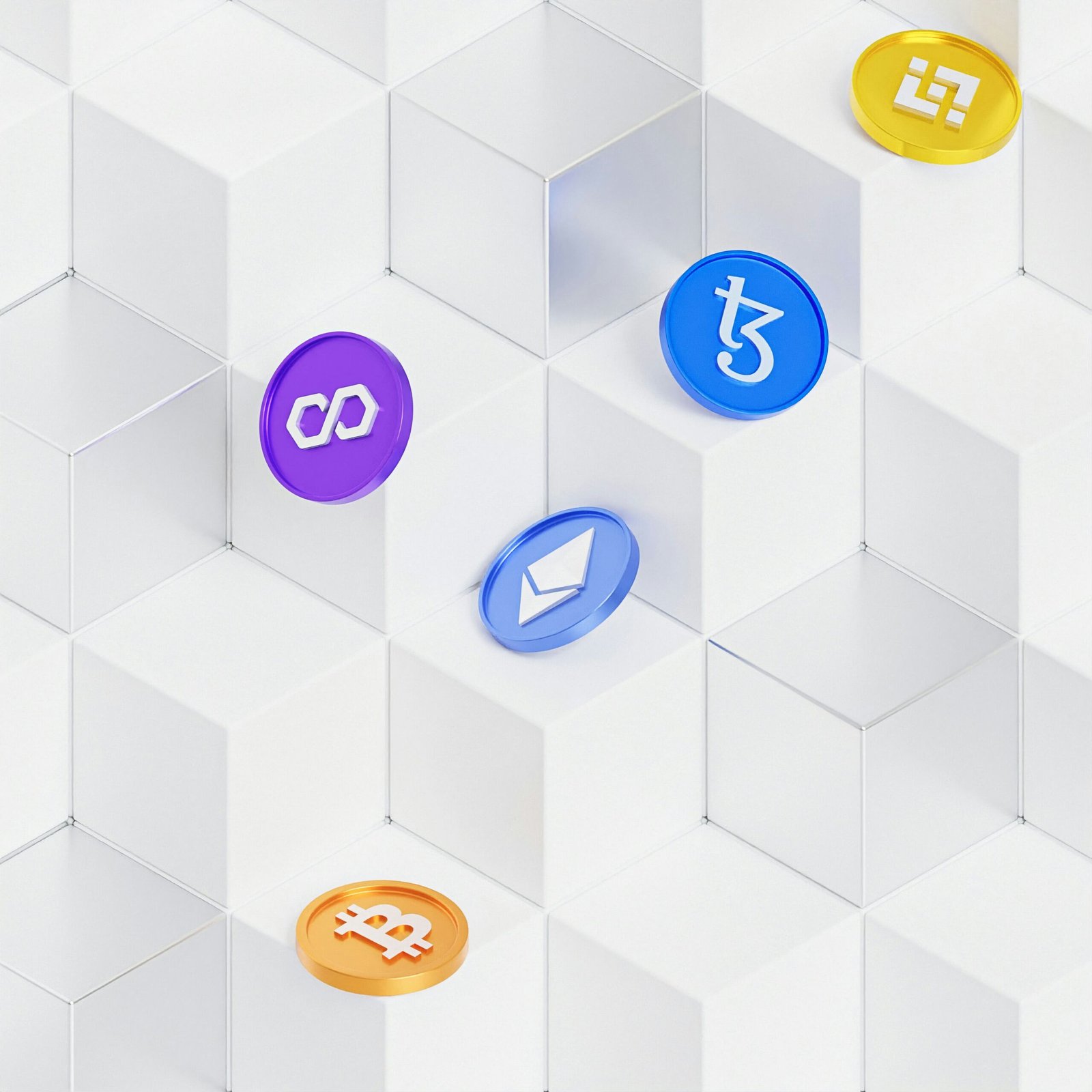Introduction to Blockchain Technology
Blockchain technology represents a revolutionary approach to data management and distribution, characterized by its key principles of decentralization, transparency, and immutability. At its core, a blockchain is a distributed ledger that allows multiple parties to record and verify transactions without the need for a centralized authority. This decentralized structure is what fundamentally distinguishes blockchain from traditional technologies, where a single entity often controls the database and the data maintained within it.
The principle of transparency in blockchain enhances trust among participants. Every transaction recorded on a blockchain is visible to all network participants, ensuring that each entry can be independently verified. This level of openness mitigates the risk of fraud and corruption, making blockchain an attractive solution for industries where data integrity is paramount. By contrast, traditional centralized systems may allow for hidden activities that could compromise data security, leading to a loss of faith from users.
Immutability is another crucial feature of blockchain technology. Once a transaction is entered into the blockchain, it becomes extraordinarily difficult to alter or delete it. Each block of data is cryptographically linked to the previous one, creating a chain that ensures historical data remains intact. This immutable record not only reinforces the authenticity of the data but also serves as a reliable audit trail for compliance and legal purposes. In traditional systems, where modifications can be made easily, the potential for manipulation exists, which can have far-reaching implications.
As we continue to explore the applications of blockchain in design and decentralized applications (dApps), understanding these fundamental principles is essential. The transformative potential of blockchain technology is becoming increasingly evident, paving the way for innovative solutions across various sectors. This foundational understanding acts as a stepping stone toward appreciating the advancements seen in areas such as NFT creation and decentralized systems.
Understanding Decentralized Applications (dApps)
Decentralized applications, commonly referred to as dApps, represent a significant evolution in software architecture. Unlike traditional applications, which rely on centralized servers for data processing and storage, dApps operate on a blockchain network. This architecture allows for a distributed computing environment where data is managed by a network of nodes, significantly reducing single points of failure and enhancing overall system resilience.
The operational framework of dApps provides numerous advantages over their centralized counterparts. One primary benefit is enhanced security. By utilizing blockchain technology, dApps can leverage cryptographic techniques to ensure that data transactions are secure and tamper-proof. This decentralization of data offers an increased layer of protection against potential cyber-attacks and unauthorized access. In contrast to traditional applications, where data breaches can compromise sensitive information stored in central databases, dApps can mitigate these risks through their inherent design.
Furthermore, dApps promote data integrity. The use of immutable ledgers guarantees that once data is recorded on the blockchain, it cannot be altered retroactively without the consensus of the network participants. This feature fosters trust among users, as they can be assured that the information they access remains unchanged and reliable. Additionally, users maintain control over their personal information when utilizing dApps. Traditional applications often require individuals to relinquish their data to central entities, leading to concerns regarding privacy and data misuse. In contrast, dApps empower users to manage their data, allowing them to decide what information they share and under what circumstances.
In summary, decentralized applications revolutionize how software functions by leveraging blockchain technology to enhance security, ensure data integrity, and provide users with greater control over their personal information. These attributes set dApps apart from traditional applications, marking a pivotal shift in the digital landscape.
The Intersection of Blockchain and Design
The integration of blockchain technology into the design process is revolutionizing the industry by introducing transparency, efficiency, and security. One of the primary benefits is the establishment of transparent design workflows. By utilizing blockchain’s immutable ledger, designers can record every stage of their design work, from initial sketches to final products. This transparency not only fosters trust among collaborators but also provides a verifiable timeline of the design process. As a result, stakeholders can confidently track alterations and contributions, thereby minimizing disputes and enhancing workflow efficiency.
Furthermore, blockchain facilitates seamless collaborations among designers, clients, and developers. The decentralized nature of blockchain allows multiple parties to work on a project in real time, regardless of their geographical locations. Smart contracts can be utilized to define roles and responsibilities clearly, ensuring that all parties adhere to agreed-upon terms. This collaborative environment encourages innovative thinking and creativity, as diverse perspectives contribute to the design process. The blockchain fosters an atmosphere where shared ownership is valued, leading to richer results and more dynamic outcomes in design projects.
Another crucial aspect is the enhancement of intellectual property protection provided by blockchain technology. Specifically, designers are often concerned about the authenticity and ownership of their work in the digital realm. Blockchain resolves this issue by allowing designers to create a secure digital certificate of authenticity that accompanies their design. Each piece of work can be timestamped and recorded on the blockchain, guaranteeing that the creator’s rights are preserved. Consequently, this assurance further motivates designers to innovate without fear of plagiarism or unauthorized use of their original designs. Overall, the intersection of blockchain and design is paving the way for a more collaborative, transparent, and secure landscape in the creative industry.
The Rise of NFTs in Design
The advent of non-fungible tokens (NFTs) has markedly transformed the design landscape, providing artists and designers with innovative ways to monetize their work. Unlike traditional forms of digital assets, which can be replicated endlessly, NFTs provide a unique identity to each piece. This uniqueness ensures that creators can sell their digital works as one-of-a-kind items, much like physical art. The blockchain technology underlying NFTs guarantees their authenticity, which not only adds value to the artwork but also revolutionizes the entire art market.
Previously, designers faced significant challenges in protecting their intellectual property and earning fair compensation for their creations. With the emergence of NFTs, artists can now sell their designs directly to consumers without the need for costly intermediaries or galleries. They have full control over their digital assets, allowing them to set prices, determine how their work is used, and even earn royalties from secondary sales. This aspect of NFTs has empowered creators, enabling them to forge a direct relationship with their audience, fostering a sense of community around their work.
Moreover, NFTs introduce new avenues for creative expression. Artists can explore dynamic designs that evolve over time or incorporate interactive elements, thus enhancing user engagement. This level of interactivity adds layers of complexity to the design process, allowing for innovative storytelling methods through visuals and digital experiences. Many designers have begun to experiment with these possibilities, resulting in a new genre of art that captures the imagination of collectors and technology enthusiasts alike.
In conclusion, the rise of NFTs marks a pivotal moment for the design industry. By allowing creators to monetize unique digital assets while retaining rights to their original works, NFTs present opportunities previously unattainable. This shift not only benefits artists but also enriches the consumer experience, heralding a new era in the convergence of art and technology.
How Blockchain Enhances Authenticity and Ownership
Blockchain technology plays a pivotal role in the realms of design, art, and creative content, particularly when it comes to enhancing authenticity and establishing ownership. At the core of this system is the decentralized nature of blockchain, which allows for the creation of cryptographically secure records that are immutable and transparent. This means that once a digital asset is recorded on the blockchain, its ownership history cannot be altered or erased, providing a reliable proof of ownership.
One of the most significant advantages of blockchain in the creative sectors is its ability to combat forgery and misappropriation of artistic work. By leveraging unique identifiers associated with each creation—such as digital signatures or hash functions—blockchain creates a digital fingerprint for each asset. This fingerprint makes it exceedingly challenging for counterfeiters to replicate the authenticity of a work. Consequently, artists and designers can confidently assert their ownership while potential buyers can verify the originality of the pieces they purchase.
Moreover, the use of smart contracts further enhances this ecosystem by automating the transfer of ownership in a secure and transparent manner. These self-executing contracts can stipulate the terms under which ownership is transferred, along with any royalties due to the original creator whenever their work is sold in secondary markets. By doing so, blockchain not only protects the rights of creators but also fosters a marketplace where authenticity is inherently ensured.
In addition to reducing forgery, blockchain technology also democratizes access to artistic works, allowing independent creators to market their designs directly to consumers without intermediaries. This fosters a sense of community and trust, as the assurance of authenticity and ownership is fundamentally embedded in the transaction process. Thus, through its inherent properties, blockchain stands as a transformative force in securing the authenticity and ownership of design in the fast-evolving digital landscape.
User Empowerment through Decentralization
The advent of blockchain technology has significantly reshaped the landscape of design and application development, heralding a new era of user empowerment through decentralization. Traditional centralized structures often lead to disparities in power and resource distribution, where decision-making is largely confined to a select few. In contrast, blockchain facilitates a more democratic environment, allowing users to engage directly with designers and developers, thereby fostering rich collaboration and innovation.
With blockchain, users can participate in the design process, contributing their insights and feedback in real-time. This direct interaction not only enhances the design’s relevance but also ensures that the end product aligns closely with user needs and preferences. By allowing users to play a more active role, blockchain empowers them to shape the applications they use, thus encouraging a sense of ownership and fostering community engagement.
Moreover, decentralization through blockchain creates equitable access to resources and rewards. In traditional frameworks, profits and benefits often accrue to a limited group of stakeholders. However, blockchain promotes a redistribution model that enables all participants to share in the success of applications. This can be particularly influential in the realm of NFT creation, where artists and creators can directly monetize their work without intermediaries, ensuring they receive fair compensation.
Additionally, the transparency inherent in blockchain allows users to verify processes and decisions, which builds trust and accountability among all parties involved. When users feel empowered to influence and benefit from the systems they interact with, it cultivates a more inclusive ecosystem. This shift towards decentralization ultimately leads to a more equitable distribution of opportunities and rewards, paving the way for a thriving community of creators and users alike.
Challenges and Limitations of Blockchain in Design
While blockchain technology holds significant potential for transforming design and decentralized applications (dApps), it is not without its challenges and limitations. One of the primary concerns is scalability. As the number of transactions increases, many blockchain networks experience slow processing speeds and higher transaction fees. This bottleneck effect can hinder the seamless integration of blockchain into design workflows, especially for applications requiring real-time data processing or high-volume transactions. For designers and developers, this means that the promise of immediate accessibility and responsiveness in applications may not always be achieved.
Another critical issue is energy consumption. The energy-intensive nature of traditional blockchain systems, particularly those relying on proof-of-work consensus mechanisms, raises questions about their environmental impact. High energy usage not only contributes to increased operational costs but also affects public perception of blockchain technology. Sustainable design practices are increasingly relevant, and as environmental concerns grow, many designers may be hesitant to adopt energy-heavy solutions when more efficient alternatives exist.
User experience stands as another challenge in the adoption of blockchain within design. The complexity of blockchain interfaces can intimidate users unfamiliar with the technology. Effective onboarding and user education are crucial to ensure that design solutions remain intuitive and accessible. Poorly designed interfaces or overly complicated verification processes can dissuade potential users from engaging with dApps, ultimately affecting their success and usability.
Lastly, regulatory concerns represent a significant barrier to the widespread implementation of blockchain in design and related fields. The evolving nature of regulations concerning cryptocurrencies, data privacy, and digital assets creates an uncertain landscape for designers seeking to leverage blockchain technology. Navigating this intricate regulatory web requires careful consideration to ensure compliance, which may complicate the development process. Addressing these challenges is vital to unlock the full potential of blockchain in design and dApp creation.
Future Trends: Blockchain’s Evolution in Design and dApps
As blockchain technology continues to evolve, its implications for design and decentralized applications (dApps) present a plethora of opportunities for innovation. One significant trend is the enhancement of collaborative processes among designers and developers. With blockchain enabling transparent and tamper-proof record-keeping, teams can work across geographical boundaries with increased trust and accountability. This decentralized framework can facilitate seamless interactions, allowing real-time feedback and iterative development, thus fostering a more agile design process.
Another noteworthy evolution is the emergence of advanced decentralized technologies that will redefine the tools available for designers. With the rise of composable architectures, designers can integrate various functionalities and services into their workflows without relying on centralized platforms. This flexibility empowers creators to not only blend design elements but also incorporate smart contracts and token mechanics directly into their projects. As a result, the customization of dApps will become more user-centric, adapting to unique community needs and enhancing overall user experience.
Moreover, artificial intelligence (AI) and machine learning are anticipated to merge with blockchain to create intelligent design systems that learn from user interactions. This synergy could foster an environment where design decisions are data-driven, enabling smarter solutions that respond proactively to user preferences. The combination of these advanced technologies could lead to more intuitive applications, enriching engagement and ownership in digital environments.
Lastly, sustainability will take center stage. As the digital landscape continues to expand, the industry’s shift toward eco-friendly practices is inevitable. Blockchain technology, with its ability to track and verify sustainable sourcing and production processes, will influence how design and development teams approach their projects. By prioritizing environmental responsibility, designers and developers can ensure they are not just creators but also stewards of a sustainable future.
Conclusion: The Future Landscape of Design with Blockchain
The emergence of blockchain technology has introduced significant opportunities for the design industry, particularly in relation to decentralized applications (dApps) and non-fungible tokens (NFTs). Through its fundamental tenets of transparency, security, and decentralization, blockchain is reshaping how designers create, distribute, and monetize their work. Traditional methods of design and intellectual property management are often fraught with challenges such as copyright infringement and lack of traceability, issues that blockchain addresses effectively.
Moreover, the integration of dApps into the design ecosystem further enhances the possibilities for innovation. By leveraging the decentralized nature of blockchain, designers can create applications that operate independently of centralized authorities, allowing for increased user control and engagement. This paradigm shift fosters a more collaborative environment, where creators and consumers can interact seamlessly, leading to a more dynamic design landscape.
The concept of NFTs has also revolutionized how digital art is perceived and valued. By creating verifiable ownership of unique digital assets, artists can engage with their audience in novel ways, exploring new commercial avenues while preserving the integrity of their creations. This transformation offers immense potential not just for established artists, but also for emerging creators who now have the means to enter the market and gain recognition without traditional gatekeepers.
As we look towards the future, the interconnectedness of blockchain, design, and decentralized applications is becoming increasingly evident. The creative landscape is on the brink of transformation, driven by these innovative technologies. By embracing blockchain, designers can not only streamline their processes but also unlock new paths for creativity and financial independence. The full realization of these benefits will ultimately rely on continued exploration and collaboration across the industry, paving the way for a more equitable and engaging environment for all stakeholders involved.




